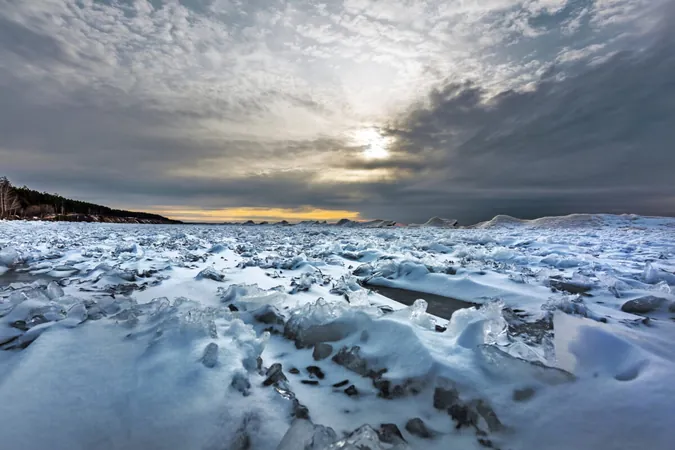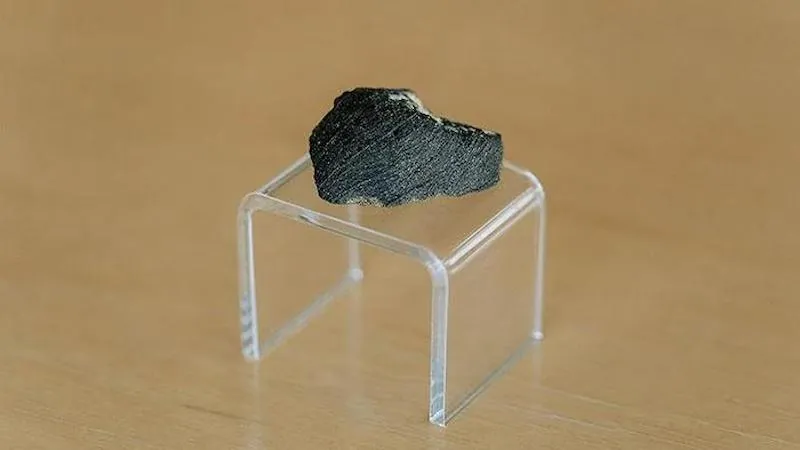
From Frozen Wasteland to Slushy Paradise: The Aftermath of the Ice Age and Its Impact on Climate
2024-11-21
Author: John Tan
Article Summary
In a remarkable transformation, our planet evolved from a severe frozen landscape to a slushy paradise in the aftermath of the last Ice Age. This article explores a pioneering study that uncovers the mechanisms behind this drastic climatic change, revealing the interplay between rising carbon dioxide levels and unique geological phenomena likened to "reverse tsunamis."
The Last Ice Age
The last Ice Age took place around 635 to 650 million years ago, leaving the Earth covered in ice and snow for millions of years. During this era, temperatures plummeted, leading to the expansion of polar ice caps that engulfed much of the planet. This ice cover reflected sunlight, contributing to a vicious cycle of cooling that entrenched the frozen state of Earth's surface.
Research Findings
Recent research published in the Proceedings of the National Academy of Sciences presents groundbreaking geochemical evidence demonstrating how the climate began to shift from this icy grip. The study's lead author, Tian Gan, explains how carbon dioxide acted as a warming agent, eventually leading to the melting of ice.
Challenges Posed by Frozen Oceans
For years, the frozen oceans posed additional challenges: low carbon dioxide levels stunted rainfall and evaporation processes and slowed down essential chemical weathering. This breakdown of rocks typically helps absorb carbon dioxide; however, when it slowed, it led to an accumulation of carbon dioxide in the atmosphere, trapping heat and tipping the climatic balance.
The Breakdown of Ice
Shuhai Xiao, a coauthor of the study, states that it was just a matter of time until the carbon dioxide levels reached a point that broke the pattern of ice. This build-up likely led to a cataclysmic end to the Ice Age, allowing sunlight to penetrate and warm the atmosphere more effectively.
A Dramatic Temperature Shift
The result was an explosive transition over the course of a mere 10 million years, with global temperatures soaring from a frigid -50 degrees Fahrenheit to a steamy 120 degrees Fahrenheit. This monumental shift resulted in the formation of the "plumeworld ocean," characterized by warmer, slushy conditions that drastically altered marine ecosystems and climate patterns.
Research Methodology
Researchers utilized lithium isotopes derived from carbonate rocks formed after the Ice Age, employing their geochemical signatures to reconstruct climatic conditions of that time.
Implications for Modern Climate Change
With an enhanced understanding of how ancient climate changes unfolded, scientists draw parallels to today's global warming crises. Finding valuable lessons from Earth's ancient transformations is crucial as we face a modern-day climate emergency.
Conclusion
As the interplay of carbon emissions and climate patterns continues to shape our future, ongoing research into our planet's frozen past remains essential in navigating the challenges posed by climate change.


 Brasil (PT)
Brasil (PT)
 Canada (EN)
Canada (EN)
 Chile (ES)
Chile (ES)
 España (ES)
España (ES)
 France (FR)
France (FR)
 Hong Kong (EN)
Hong Kong (EN)
 Italia (IT)
Italia (IT)
 日本 (JA)
日本 (JA)
 Magyarország (HU)
Magyarország (HU)
 Norge (NO)
Norge (NO)
 Polska (PL)
Polska (PL)
 Schweiz (DE)
Schweiz (DE)
 Singapore (EN)
Singapore (EN)
 Sverige (SV)
Sverige (SV)
 Suomi (FI)
Suomi (FI)
 Türkiye (TR)
Türkiye (TR)